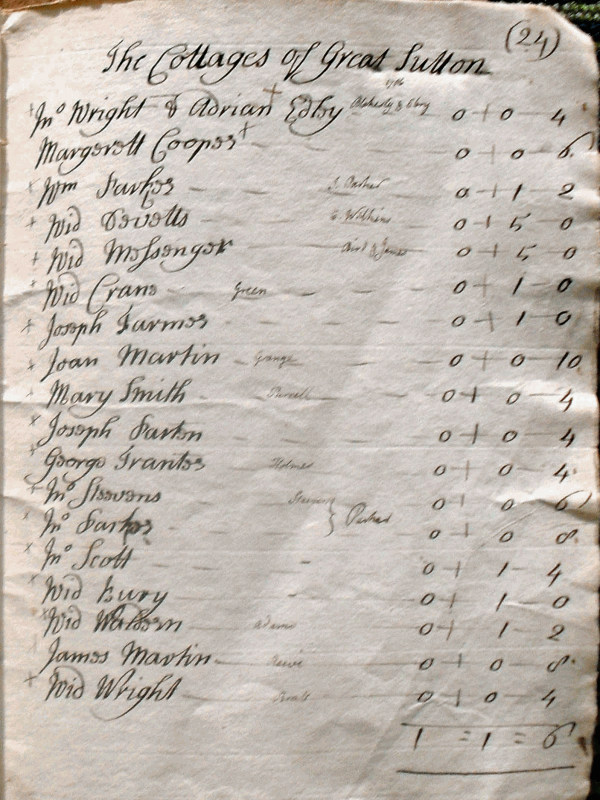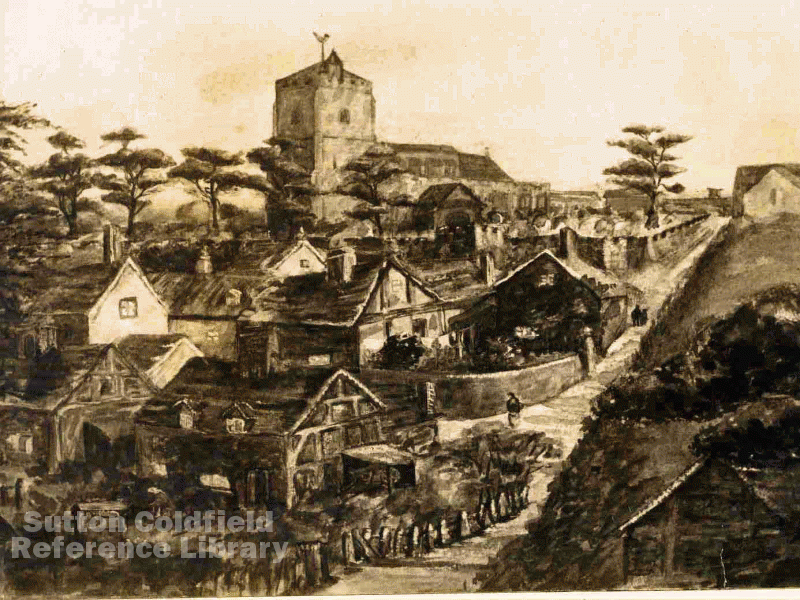The 1540s were a time of great upheaval in England. One result of the dissolution of the monasteries, the turmoil in the church, and increasing population, was an increase in vagrancy, with men who were unable to make a living in their home parish tramping the roads in search of somewhere to settle. Legislation in order to reduce vagrancy by empowering parishes to eject vagrants , or “inmakes” as they were called, was enacted. The Sutton Court Leet of October 1554 made an order “that no inhabitant receive any inmakes in their houses on pain of 6s 8d and if anyone has any such inmakes they move them out before the feast of the Annunciation of the Blessed Mary Virgin next to come on the same pain”, and at the next court, in April 1555, William Smythe of Little Sutton, Elizabeth Garrett of the same place, Agnes Curteys of Great Sutton and Alice Cocks of the same place were all fined twelve pence for harbouring “inmakes in their houses contrary to the ordinance thereon made at the last court”.
Nevertheless vagrants did settle here. Sutton Coldfield’s very extensive commons provided plenty of scope for “squatting”, where if the vagrant could erect a shelter and spend the night there he was allowed to stay. Many of the squats were on the fringes of Sutton. The Warden and Society of Sutton (i.e.the Corporation) administered the commons, and they dealt with such people by charging an annual fine of a few pence, and the squats soon developed into cottages. The same method was adopted by the increasing number of Sutton’s poor men, establishing their cottages on more central common land such as Church Hill and Reddicap Heath. Some of the cottagers found work as farm labourers, but many had skills, adding to the prosperity of the town by plying their trades as weavers, tailors, carpenters, wheelwrights, nailers, shoemakers and other such cottage industries. The Sutton Corporation Rental of 1742 lists 103 cottages, most paying the basic rent of 4d, but some cottagers had built themselves farmhouses, and taken in a few acres of nearby common land to farm, in one case paying a charge of £1/15/-.
The cottagers were tolerated, but as their houses were built on common land they had no security of tenure, and they could in law be evicted. In the 1740s they banded together and requested the Warden to grant them leases which would give them the same rights as any other tenants; when this was refused, the cottagers combined to bring a court case against the Warden. The Warden and Society decided not to go to the expense of defending their decision, and all the cottagers were given 21-year leases. So in 1760 the Warden and Society had an estate of about 344 acres, most of it former commons. One hundred and five cottages, with their small fields, occupied 240 acres, the Corporation had recently enclosed 35 acres at Echelhurst to finance the workhouse; mill pools at Hill Hook and Langley occupied 15 acres, and 10 acres were attached to Longmoor Mill. Fields at Doe Bank totalling 32 acres may have once been commons. When incorporated in 1528 the Warden and Society owned only the remaining 12 acre field, the Lords Meadow. This meadow had been the Earl of Warwick’s hay meadow in feudal times, but when Sutton was incorporated as a self-governing town in 1528, the Lords Meadow Charity was set up to provide relief to poor widows from the rent of the land.

